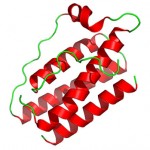Leptin’s Clinical Indications: Alive and Kicking?
Wednesday, January 20, 2010When the adipocyte-derived protein leptin was first discovered almost 20 years ago, it was touted as a possible “cure” for obesity. This idea never proved clinically effective with the exception of rare cases of genetic leptin deficiency.
However, as reviewed by Theodore Kelesidis and colleagues from Harvard Medical School, Boston, MA, in the latest issue of the Annals of Internal Medicine, there are a number of other interesting uses of leptin treatment that may well prove to soon be clinically relevant.
Thus, while circulating leptin levels certainly serve as a gauge of energy stores, thereby directing the regulation of energy homeostasis, neuroendocrine function, and metabolism, it appears that leptin’s physiological role is more as an indicator of energy deficiency, rather than energy excess.
Thus, decreases in leptin levels (as see with caloric restriction, weight loss, or loss of adipose tissue as in lipodystrophy) may mediate adaptation by driving increased food intake and directing neuroendocrine function to converse energy, such as inducing hypothalamic hypogonadism to prevent fertilization (as seen with anorexia or excessive exercise).
Currently a number of studies are exploring the role of leptin (particularly long-acting leptin homologues, e.g. metreleptin) in helping prevent weight regain in patients with intentional weight loss.
Replacement of leptin in physiologic doses also restores ovulatory menstruation in women with exercise-induced hypothalamic amenorrhea and improves metabolic dysfunction in patients with lipoatrophy, including lipoatrophy associated with HIV or highly active antiretroviral therapy.
Thus, although leptin treatment may not be an effective way to promote weight loss, it may well prove to have a number of clinical applications that may be relevant to weight management and treating the complications of excessive weight loss or lipodystrophy.
AMS
Edmonton, Alberta



